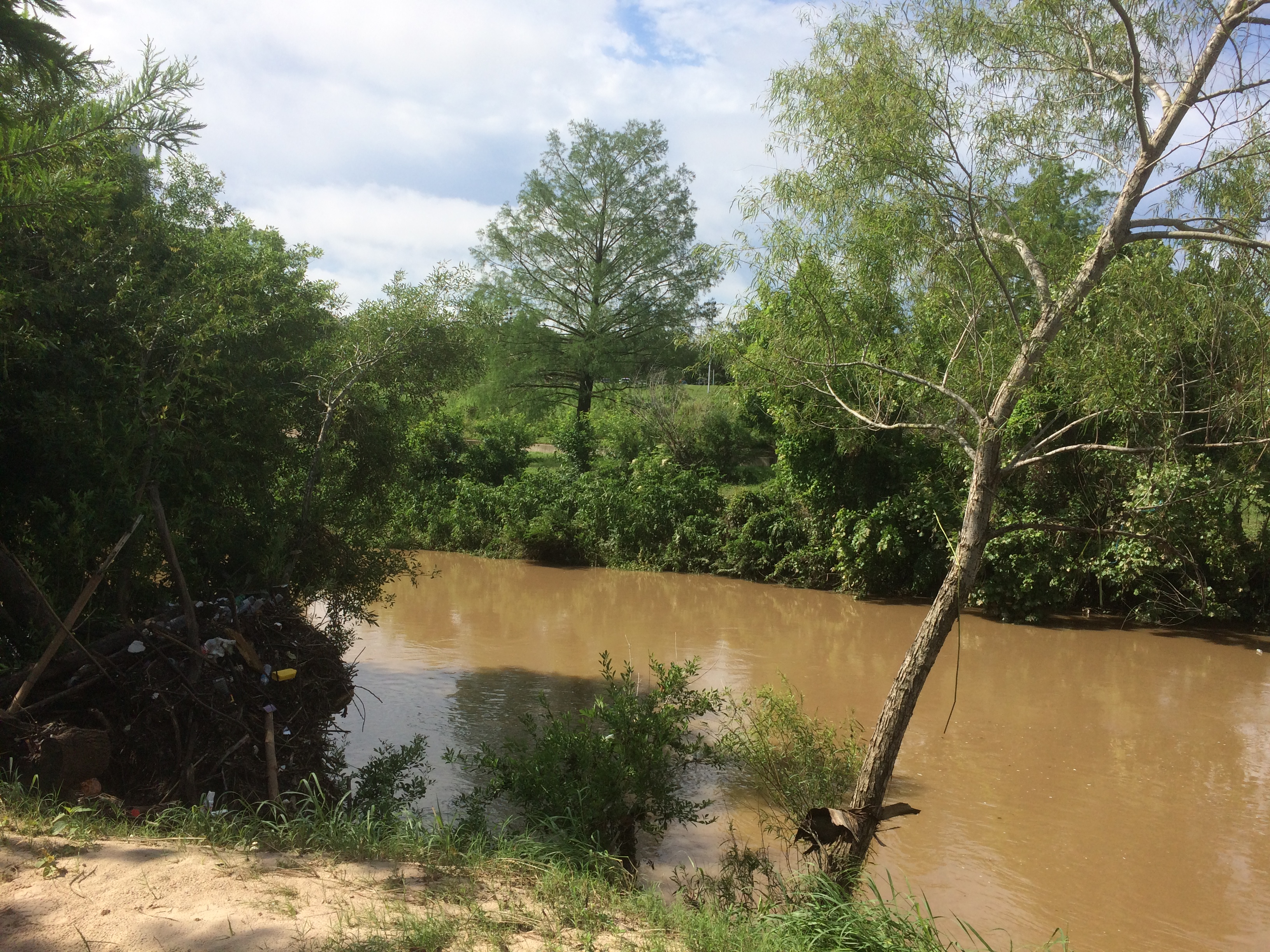Near the Galleria in Houston, which is a mixed-use property that includes the 1.9 million-square-foot mall of that name as well as office towers and a couple of hotels, is a local feature unlike any other: the Gerald D. Hines Waterwall Park. Or more commonly, the Waterwall.
Waterwall is an apt name, with water cascading down the front.
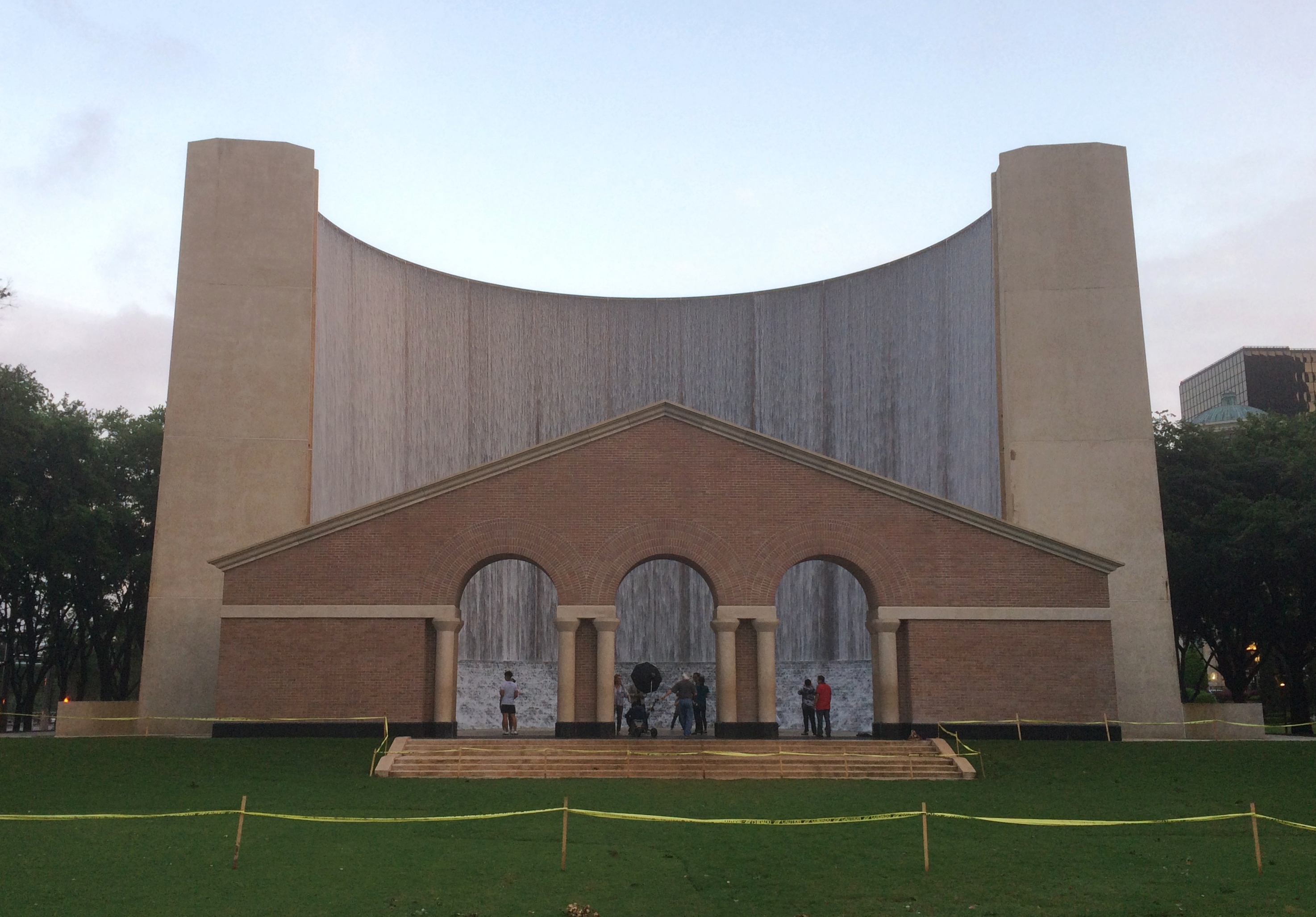 Water cascades down the back as well.
Water cascades down the back as well.
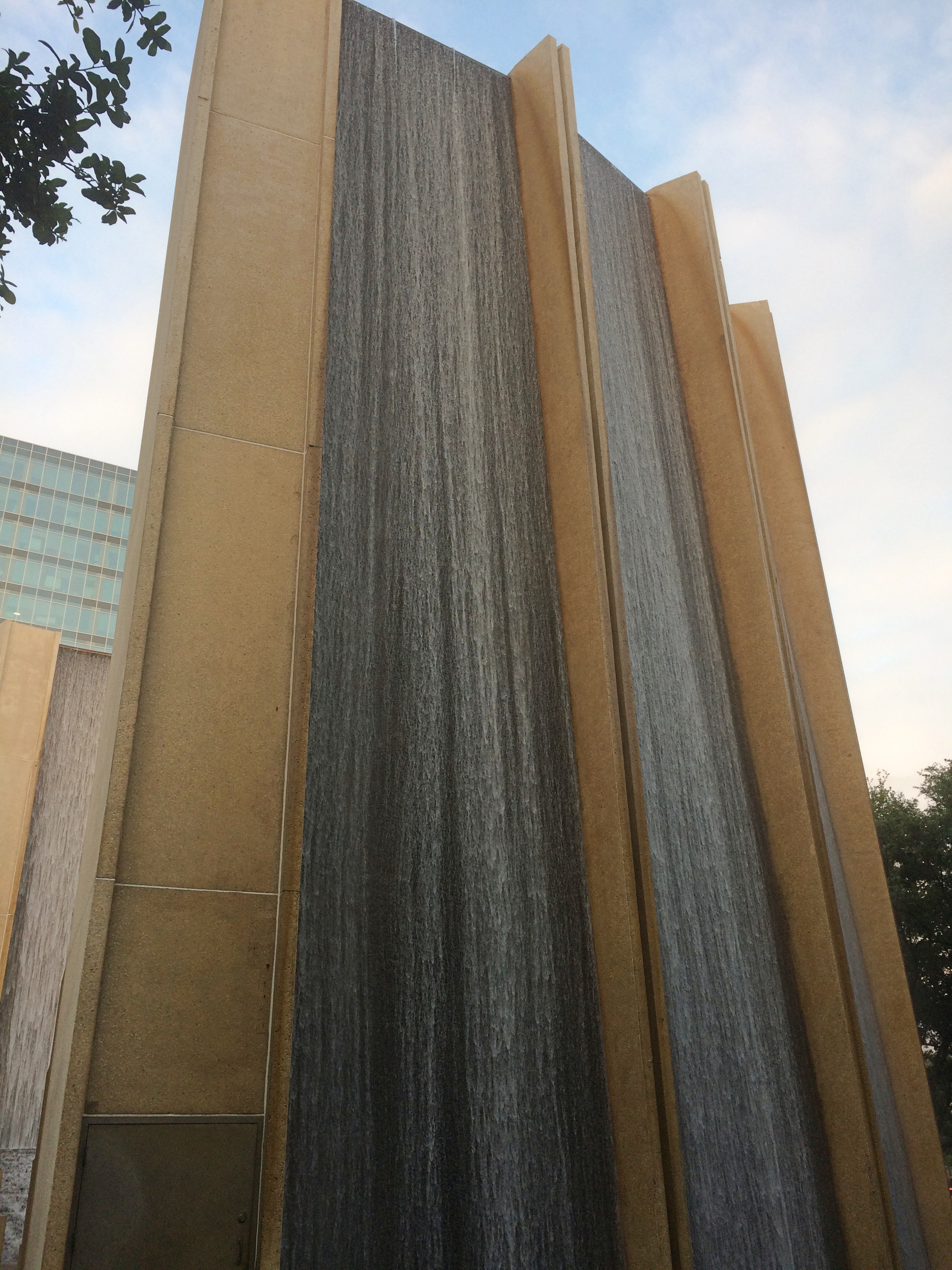 According to a nearby plaque, 11,000 gallons of water spill over the walls per minute, from a height of 64 feet. John Burgee Architects, working with Philip Johnson, designed the massive water feature, apparently inspired by ancient Roman theaters.
According to a nearby plaque, 11,000 gallons of water spill over the walls per minute, from a height of 64 feet. John Burgee Architects, working with Philip Johnson, designed the massive water feature, apparently inspired by ancient Roman theaters.
This is a drone’s view. All we had were our own eyes to appreciate the place.
It’s a popular place to have your picture taken, front and back, but especially in the circle near the spray coming off the waterwall.
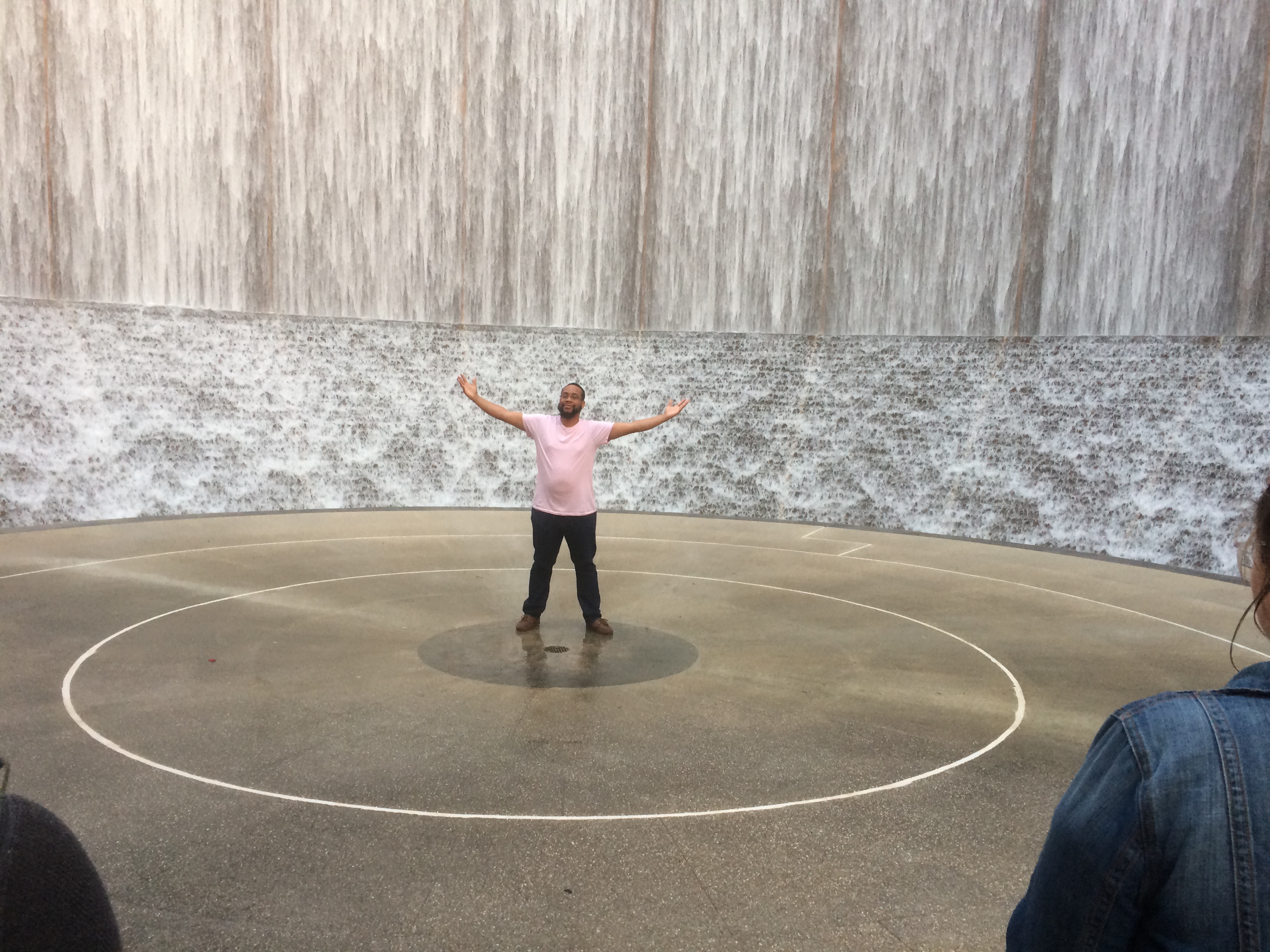
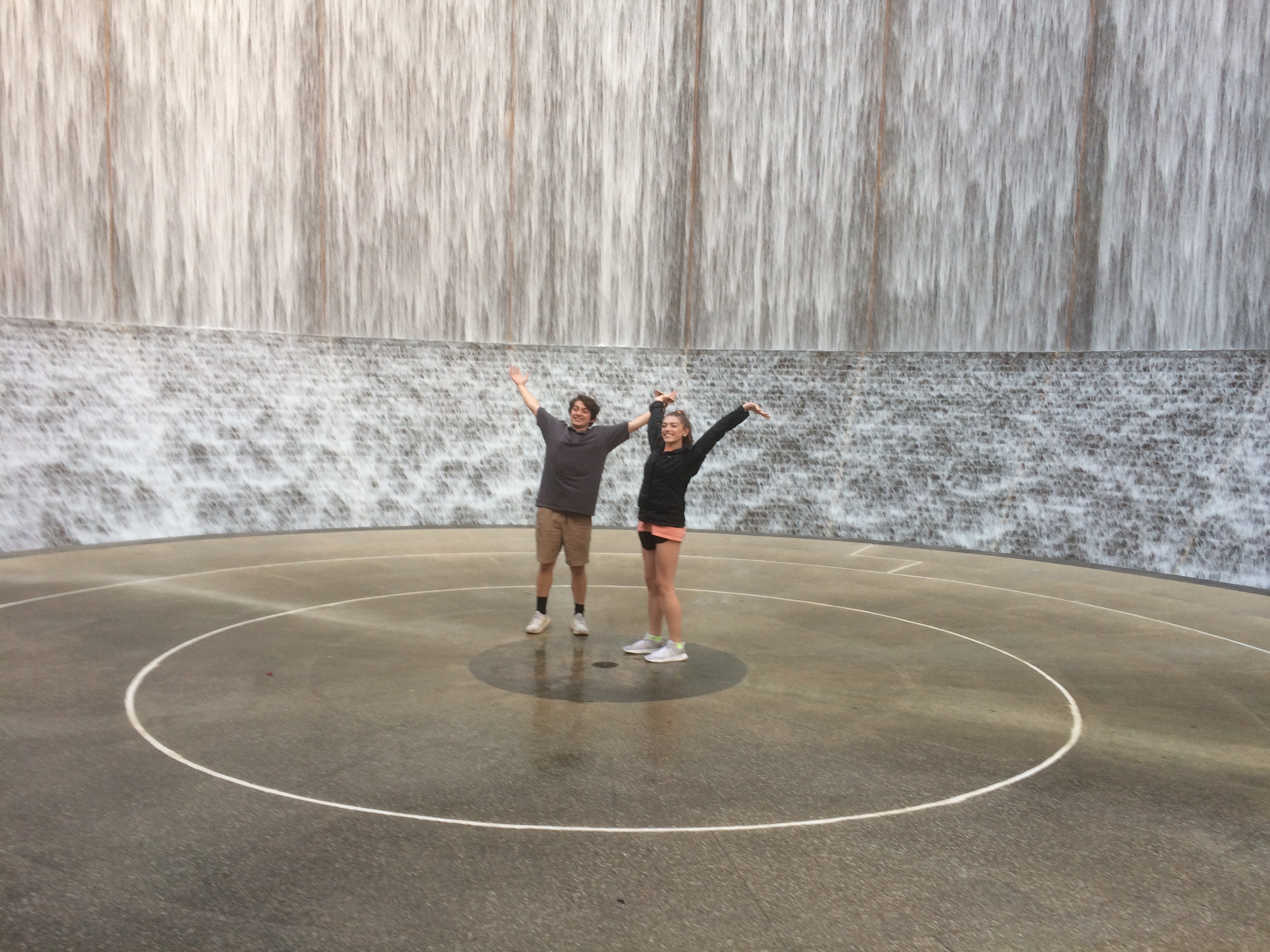
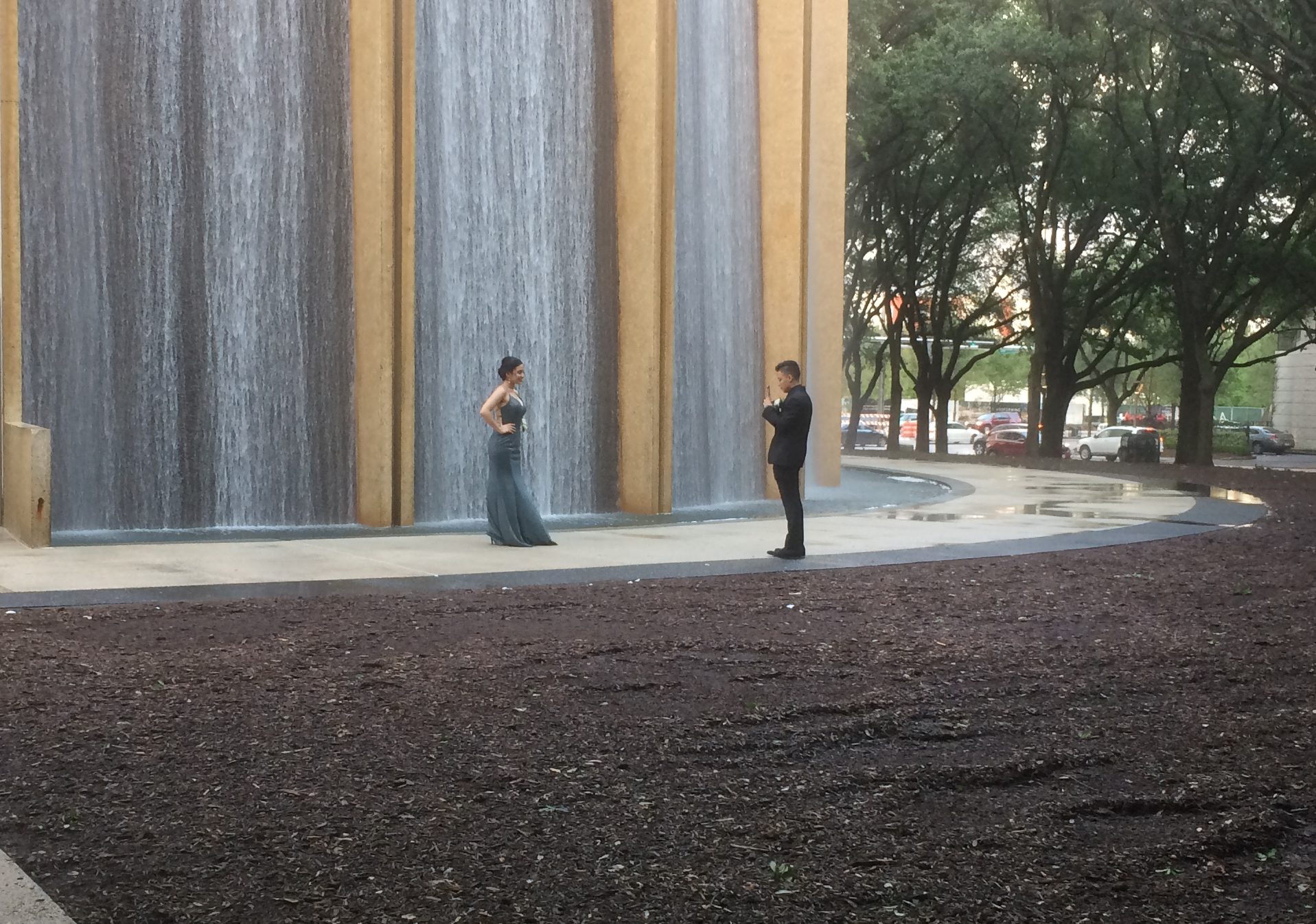 More than one person asked Lilly to take their picture at the site, including the young couple above, dressed to the nines.
More than one person asked Lilly to take their picture at the site, including the young couple above, dressed to the nines.
Completed in 1985, Waterwall was privately owned until it looked like ownership might destroy it. In 2008, the Uptown Houston Tax Increment Reinvestment Zone, a local nonprofit, acquired the Waterwall and the surrounding land. That might have been when I first read about the Waterwall, but then I forgot about it.
We stayed near the Galleria — in the nicest La Quinta I’ve ever stayed at — and when I was mapping out a route to visit the mall, I noticed the Waterwall nearby on Google Maps. I remembered it instantly and knew I wanted to go. We saw it late on the afternoon of May 11.
The next morning, we checked out and headed for New Orleans. But not before we spent a while near Buffalo Bayou, the main river through metro Houston. It’s another map feature that I wanted to see with my own eyes.
The park associated with Buffalo Bayou near downtown Houston has its charms, one of which is a view of downtown Houston.
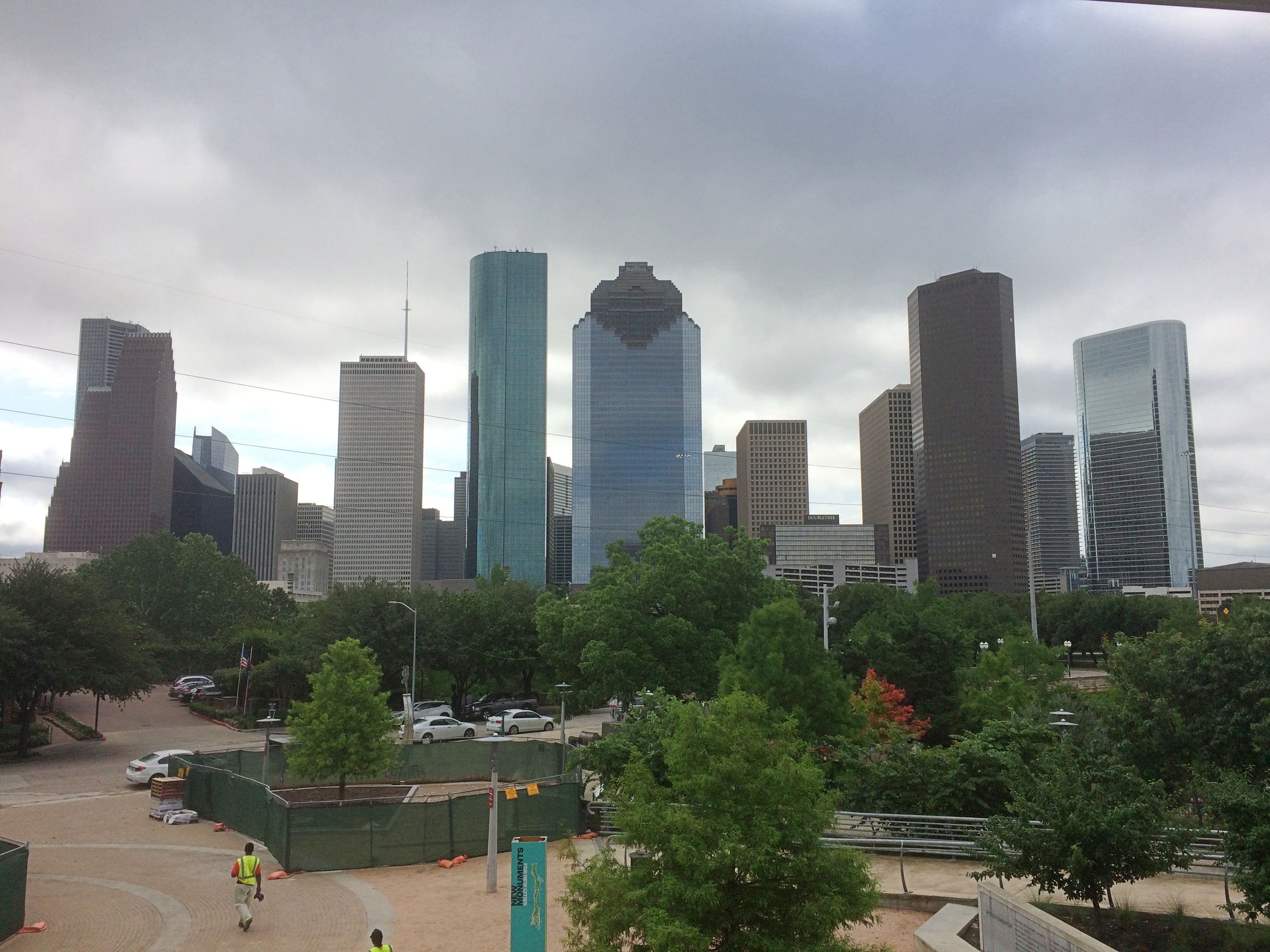 That is the city’s original downtown, but at least in terms of office building density, the Galleria area now functions as another downtown for Houston. I knew that because I’ve read about the Galleria office market, but seeing it myself drove the point home.
That is the city’s original downtown, but at least in terms of office building density, the Galleria area now functions as another downtown for Houston. I knew that because I’ve read about the Galleria office market, but seeing it myself drove the point home.
Lilly and I walked along the Buffalo Bayou Park path for about an hour.
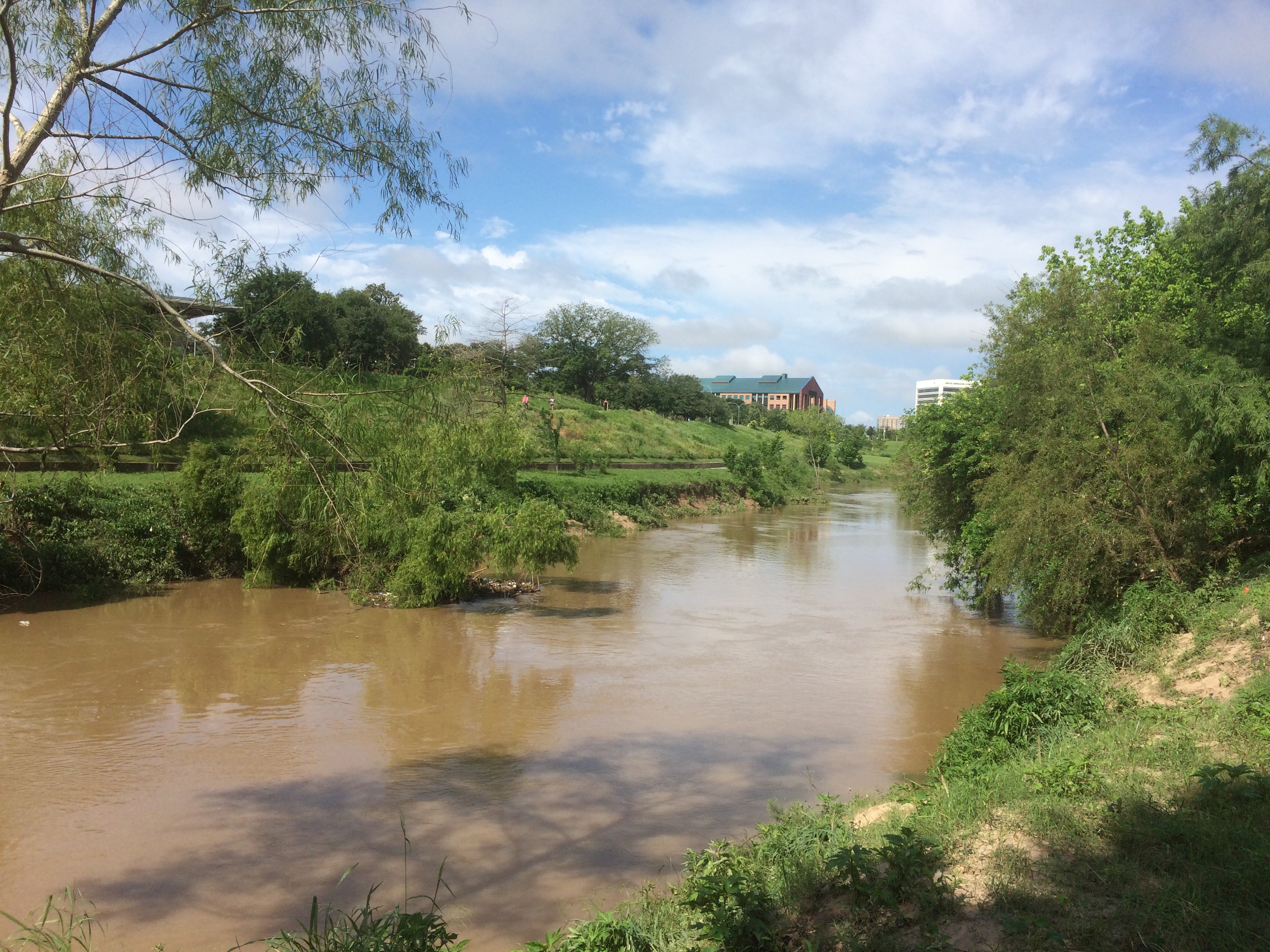
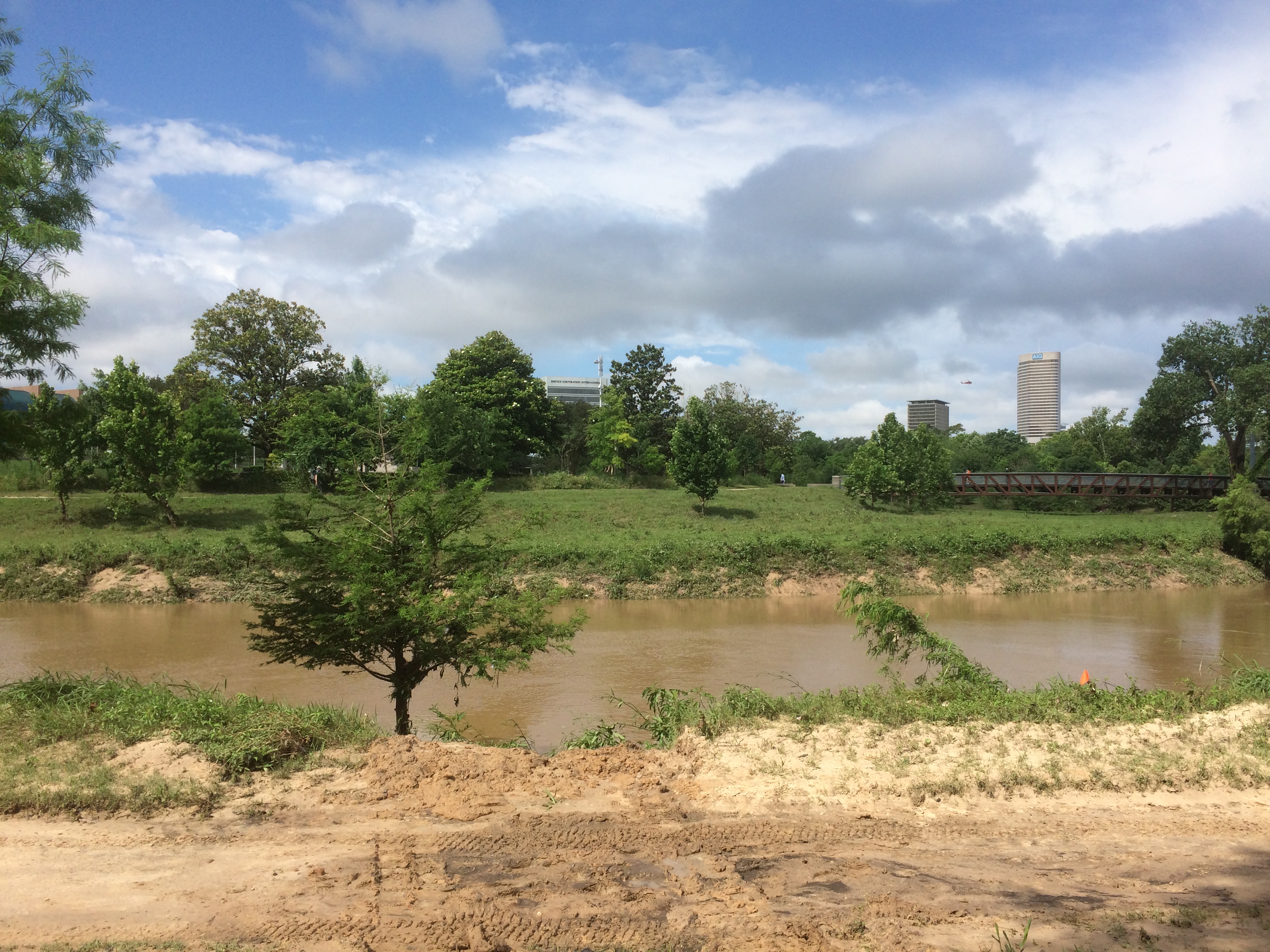 At one point, the landscape urged us onward.
At one point, the landscape urged us onward.

At the tip end of Buffalo Bayou Park facing downtown is the Buffalo Bayou Park Cistern. I can’t remember when I read about that. It wasn’t long ago.
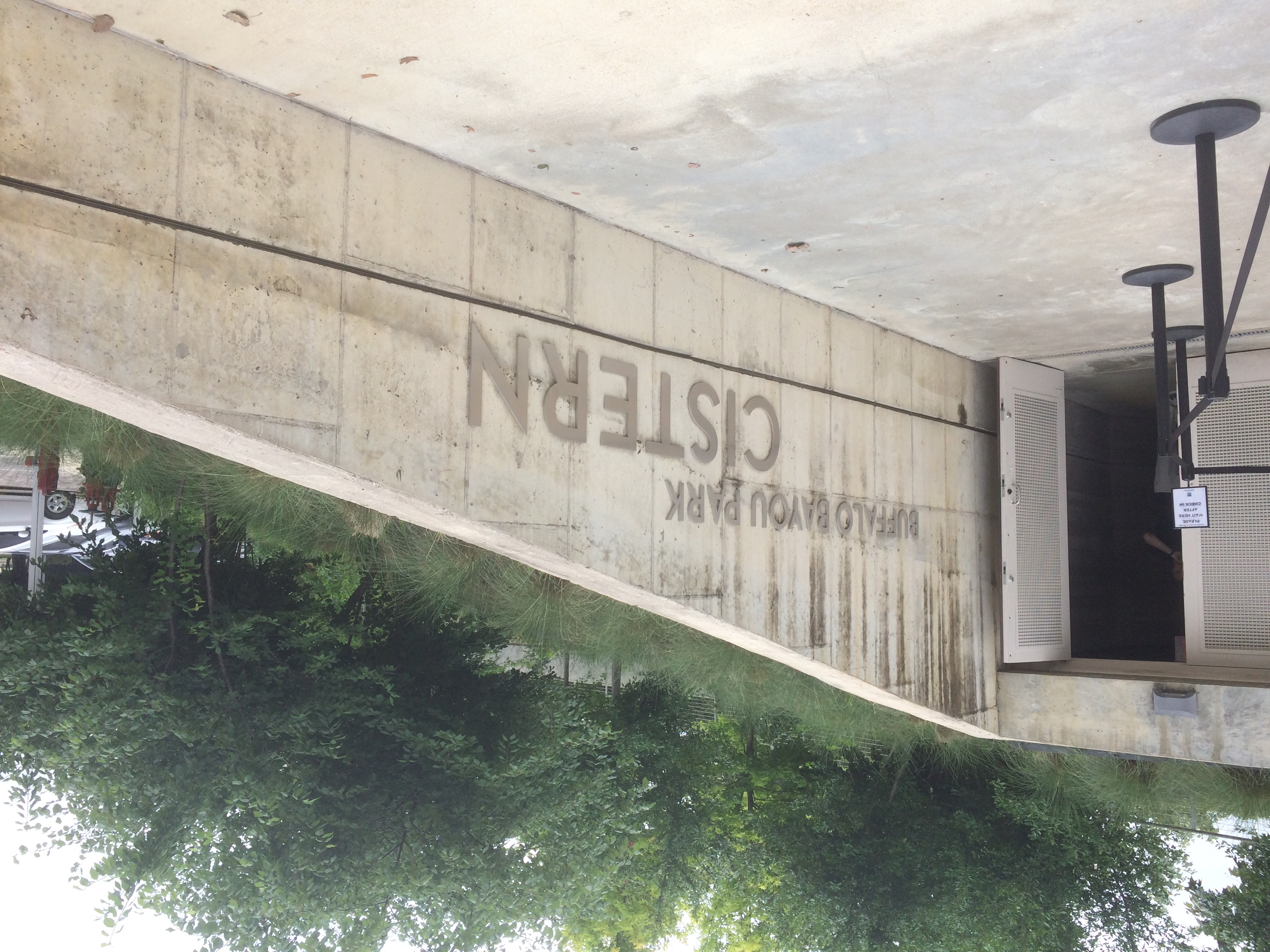 Maybe in the likes of Atlas Obscura. That publication saves me the trouble of writing a description, along with the embarrassment of publishing the crummy pictures that I took inside the cistern.
Maybe in the likes of Atlas Obscura. That publication saves me the trouble of writing a description, along with the embarrassment of publishing the crummy pictures that I took inside the cistern.
“Built in 1926, this 87,500-square-foot… space was one of Houston’s first underground reservoirs,” the Atlas says. “The eight-inch-thick concrete roof is supported by 221 concrete pillars reaching 25 feet high that march in rows into the dim distance.
“A public works facility for decades, an irreparable leak was eventually found in the structures walls and thus it was subsequently decommissioned in 2007. The city was preparing to demolish it when it was found by the partnership developing Buffalo Bayou Park. After briefly considering using it for parking or mulch storage, the developers decided to keep it as an unusual and attractive space for park visitors.”
We took the 20-minute tour inside. “That was cool,” Lilly said afterward, meaning it metaphorically, not literally. I was expecting the inside of the cistern to be cool like a cave, but it was closer to room temperature. Anyway, I completely agree with Lilly.
